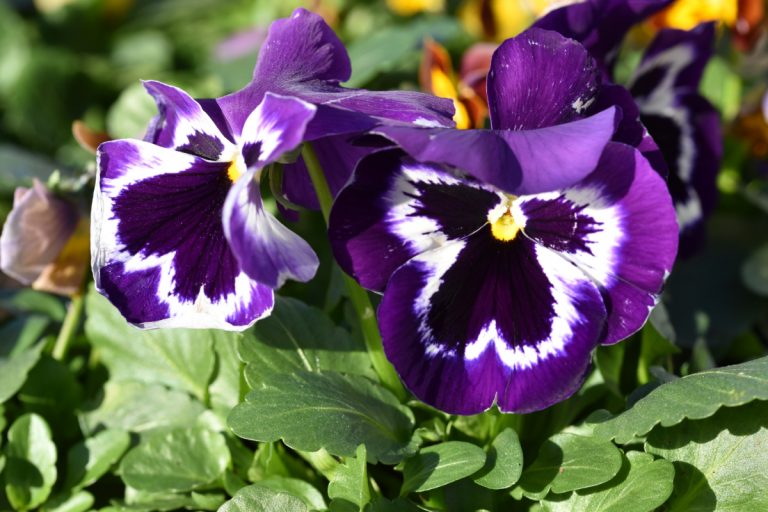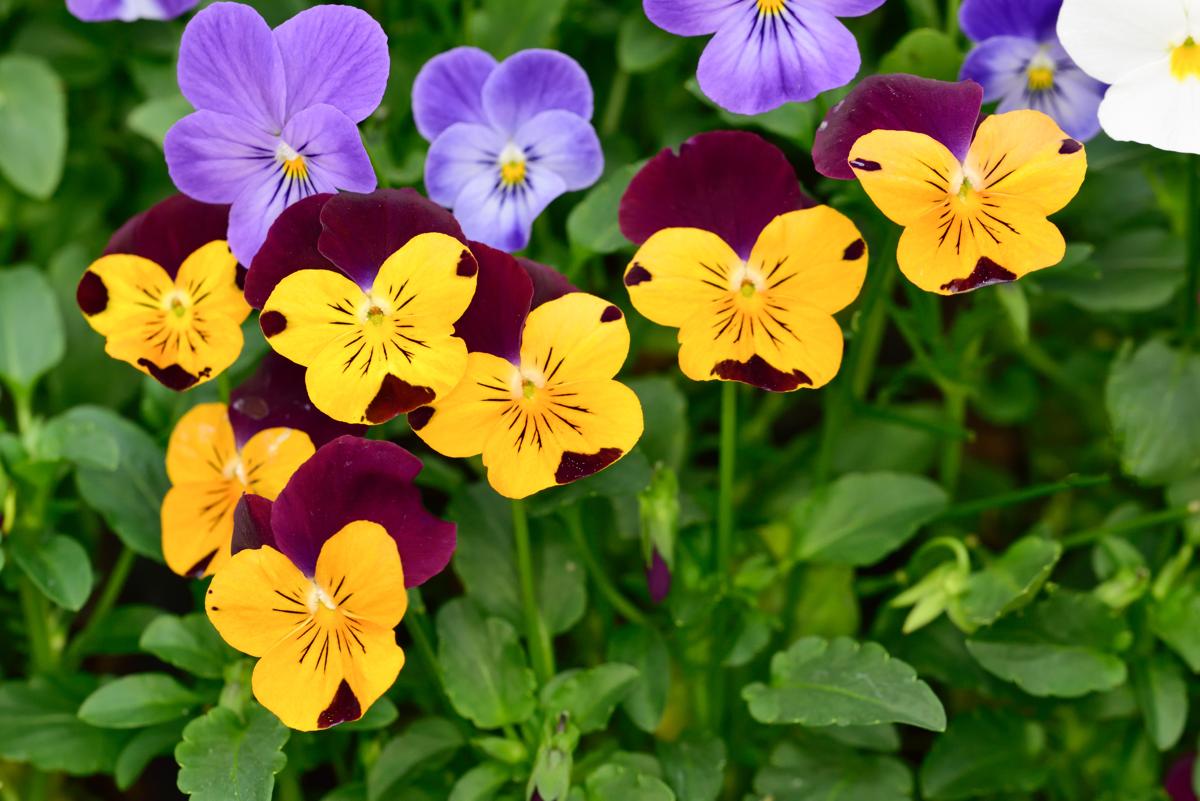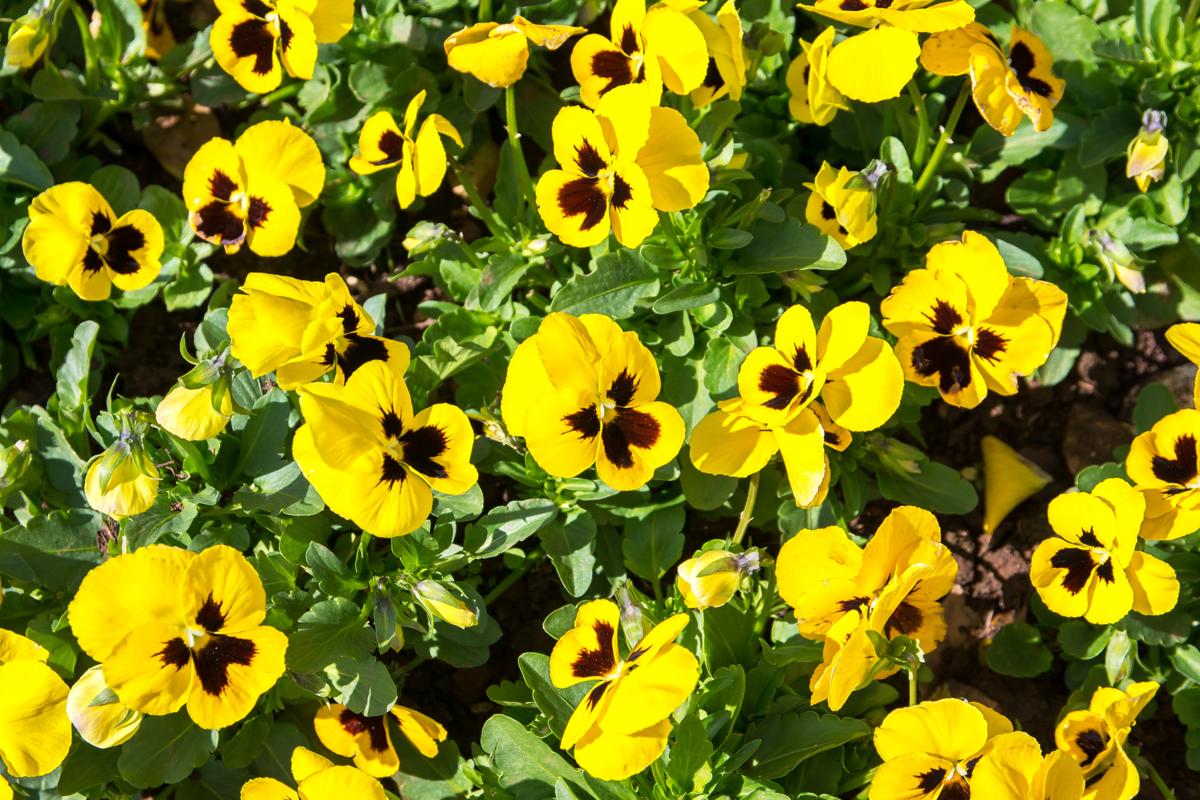Understanding Pansy Sun Requirements: Separating Fact from Fiction
Pansies are one of the most popular and versatile flowers in the garden, but their sun requirements are often misunderstood. Many gardeners assume that pansies need full sun to thrive, but this is not entirely accurate. In fact, pansies can tolerate a range of sunlight conditions, from partial shade to full sun, depending on the variety and climate.
So, do pansies need full sun? The answer is not a simple yes or no. While some pansy varieties can handle full sun, others may require partial shade to prevent scorching and promote healthy growth. In general, pansies prefer bright, indirect sunlight, especially in warmer climates. This is because direct sunlight can cause the leaves to become scorched and the flowers to fade.
In cooler climates, however, pansies may benefit from full sun, especially during the spring and fall months when the sun is not as intense. In these conditions, full sun can help to promote healthy growth and flowering. However, it’s still important to provide some shade during the hottest part of the day to prevent scorching.
It’s also worth noting that pansies have different sun requirements at different stages of their growth. For example, young pansy seedlings may require more shade than mature plants, while pansies in bloom may benefit from more sunlight to promote flowering.
Overall, the key to understanding pansy sun requirements is to consider the specific variety, climate, and stage of growth. By providing the right amount of sunlight, gardeners can help to promote healthy growth, prevent scorching, and encourage beautiful flowering.
How to Provide the Perfect Amount of Sunlight for Your Pansies
Providing the right amount of sunlight for pansies is crucial for their growth and health. While some pansy varieties can handle full sun, others prefer partial shade. To determine the perfect amount of sunlight for your pansies, consider the specific variety, climate, and time of day.
One way to provide partial shade for pansies is to use shade cloth or other forms of shade to filter the sun’s rays. Shade cloth can be placed over the plants during the hottest part of the day to prevent scorching and promote healthy growth. Alternatively, you can plant pansies in a location that receives morning sun and afternoon shade, such as under a tree or on the east side of a building.
Another way to provide the perfect amount of sunlight for pansies is to use a combination of direct and indirect sunlight. For example, you can place pansies in a south-facing window that receives direct sunlight for part of the day, and then use a sheer curtain to filter the sun’s rays during the hottest part of the day.
It’s also important to consider the time of day when providing sunlight for pansies. In general, pansies prefer bright, indirect sunlight during the morning and early afternoon, and partial shade during the late afternoon and evening. By providing the right amount of sunlight at the right time of day, you can help to promote healthy growth and flowering.
In addition to using shade cloth and adjusting the time of day, you can also use other techniques to provide the perfect amount of sunlight for pansies. For example, you can use a trellis or other support to provide shade for the plants, or use a reflective material such as aluminum foil to reflect sunlight away from the plants during the hottest part of the day.
By using these techniques, you can provide the perfect amount of sunlight for your pansies and help to promote healthy growth and flowering. Remember, the key is to find the right balance of sunlight and shade for your specific pansy variety and climate.
The Benefits of Partial Shade for Pansies: A Deeper Dive
Partial shade is a crucial component of pansy care, and it offers numerous benefits for these delicate flowers. By providing partial shade, gardeners can help prevent scorching, promote healthy growth, and increase flower production. But how exactly does partial shade achieve these benefits, and what are the best ways to provide it for your pansies?
One of the primary benefits of partial shade for pansies is the prevention of scorching. When pansies are exposed to direct sunlight for too long, their leaves and petals can become scorched, leading to a decline in their overall health and appearance. Partial shade helps to filter out the intense rays of the sun, reducing the risk of scorching and promoting healthy growth.
In addition to preventing scorching, partial shade also helps to promote healthy growth in pansies. By reducing the amount of direct sunlight, partial shade allows pansies to focus their energy on producing new growth, rather than expending it on protecting themselves from the sun. This leads to stronger, more robust plants that are better equipped to handle the challenges of the garden.
Partial shade also has a profound impact on flower production in pansies. By providing a more moderate level of sunlight, partial shade allows pansies to produce more flowers, and to produce them for a longer period of time. This is because the reduced sunlight levels help to promote the production of flowering hormones, leading to a more abundant and prolonged bloom.
So, how can gardeners provide partial shade for their pansies? One of the simplest and most effective ways is to use shade cloth or other forms of shade to filter the sun’s rays. This can be especially useful in warmer climates, where the sun’s rays can be intense and prolonged. Another option is to plant pansies in a location that receives morning sun and afternoon shade, such as under a tree or on the east side of a building.
By providing partial shade for your pansies, you can help to promote healthy growth, prevent scorching, and increase flower production. Whether you’re a seasoned gardener or just starting out, incorporating partial shade into your pansy care routine can have a profound impact on the health and beauty of your plants.
What Happens When Pansies Get Too Much Sun: Common Problems and Solutions
While pansies can tolerate some direct sunlight, too much of it can be detrimental to their health. When pansies receive too much direct sunlight, they can experience a range of problems, including scorched leaves, wilted stems, and reduced flowering. In this section, we’ll explore these common problems and offer solutions to help mitigate them.
Scorched leaves are one of the most common problems that can occur when pansies receive too much direct sunlight. This can happen when the leaves are exposed to intense sunlight for too long, causing them to become discolored and develop brown or yellow spots. To prevent scorched leaves, gardeners can provide partial shade for their pansies, either by using shade cloth or by planting them in a location that receives morning sun and afternoon shade.
Wilted stems are another common problem that can occur when pansies receive too much direct sunlight. This can happen when the stems are exposed to intense sunlight for too long, causing them to become weak and brittle. To prevent wilted stems, gardeners can provide support for their pansies, such as staking or caging, and ensure that they receive adequate water and nutrients.
Reduced flowering is also a common problem that can occur when pansies receive too much direct sunlight. This can happen when the plants are exposed to intense sunlight for too long, causing them to focus their energy on producing foliage rather than flowers. To promote flowering, gardeners can provide partial shade for their pansies and ensure that they receive adequate water and nutrients.
So, what can gardeners do to mitigate these problems and ensure that their pansies receive the right amount of sunlight? One solution is to provide partial shade for their pansies, either by using shade cloth or by planting them in a location that receives morning sun and afternoon shade. Another solution is to ensure that pansies receive adequate water and nutrients, as this can help to promote healthy growth and flowering.
By understanding the common problems that can occur when pansies receive too much direct sunlight, gardeners can take steps to mitigate them and ensure that their plants receive the right amount of sunlight. Whether you’re a seasoned gardener or just starting out, providing the right amount of sunlight for your pansies is crucial for their health and well-being.
Pansy Varieties and Sunlight: Which Ones Can Handle Full Sun?
While pansies are often thought to require full sun, the truth is that different varieties have different sunlight requirements. Some pansy varieties can handle full sun, while others prefer partial shade. In this section, we’ll explore the different types of pansy varieties and their varying sunlight requirements.
One type of pansy variety that can handle full sun is the ‘Swiss Giant‘ pansy. This variety is known for its large, showy flowers and can thrive in full sun to partial shade. Another variety that can handle full sun is the ‘Moulin Rouge’ pansy, which features bright red flowers with yellow centers.
On the other hand, some pansy varieties prefer partial shade. The ‘Purple Emperor’ pansy, for example, prefers partial shade to full sun and features beautiful, deep purple flowers. The ‘Blue Moon‘ pansy is another variety that prefers partial shade and features delicate, sky blue flowers.
It’s also worth noting that some pansy varieties are more sensitive to sunlight than others. The ‘Fragrant Fancy‘ pansy, for example, is a delicate variety that prefers partial shade to full sun and features fragrant, pink flowers.
When choosing a pansy variety, it’s essential to consider the amount of sunlight it will receive. If you’re planting pansies in a location that receives full sun, choose a variety that can handle it. If you’re planting pansies in a location that receives partial shade, choose a variety that prefers it.
By understanding the different sunlight requirements of various pansy varieties, gardeners can choose the right variety for their specific garden conditions. Whether you’re looking for a pansy that can handle full sun or one that prefers partial shade, there’s a variety out there for you.
Creating a Pansy-Friendly Garden: Tips for Design and Layout
When it comes to creating a pansy-friendly garden, there are several factors to consider. One of the most important is sunlight patterns. Pansies need sunlight to photosynthesize and grow, but too much direct sunlight can be detrimental. To create a pansy-friendly garden, it’s essential to consider the amount of sunlight your garden receives and design your garden accordingly.
Soil preparation is also crucial when creating a pansy-friendly garden. Pansies prefer well-draining soil that is rich in organic matter. To achieve this, add compost or well-rotted manure to your soil before planting your pansies. This will help to improve the soil’s structure and fertility, giving your pansies the best possible start.
Companion planting is another important consideration when creating a pansy-friendly garden. Some plants, such as marigolds and nasturtiums, repel pests that can damage pansies. Others, such as basil and mint, improve the flavor and fragrance of pansies. By planting these companion plants alongside your pansies, you can create a healthy and thriving garden ecosystem.
Garden structure is also important when creating a pansy-friendly garden. Pansies prefer a slightly acidic to neutral soil pH, so avoid planting them in areas with high levels of alkalinity. They also prefer a consistent level of moisture, so avoid planting them in areas with poor drainage.
When designing your garden, consider using a mix of annuals and perennials to create a dynamic and interesting landscape. Pansies are annuals, so they will need to be replanted every year. However, by combining them with perennials, such as hostas and daylilies, you can create a garden that is full of interest and color throughout the growing season.
Finally, don’t forget to consider the mature size of your pansies when designing your garden. Pansies can grow quite large, so make sure to leave enough space between each plant to allow for proper growth and air circulation. By following these tips, you can create a pansy-friendly garden that is both beautiful and thriving.
Common Mistakes to Avoid When Caring for Pansies in the Sun
When caring for pansies in the sun, there are several common mistakes that gardeners make. One of the most common mistakes is overwatering. Pansies prefer well-draining soil, and too much water can lead to root rot and other problems. To avoid overwatering, make sure to check the soil regularly and only water when it feels dry to the touch.
Another common mistake is underwatering. Pansies need consistent moisture to thrive, and underwatering can lead to wilted stems and reduced flowering. To avoid underwatering, make sure to water your pansies regularly, especially during hot and dry weather.
Failing to provide adequate shade is also a common mistake. Pansies prefer partial shade, especially in warmer climates. To avoid this mistake, make sure to provide shade for your pansies during the hottest part of the day, either by using shade cloth or by planting them in a location that receives morning sun and afternoon shade.
Not providing enough nutrients is another common mistake. Pansies are heavy feeders and need regular fertilization to thrive. To avoid this mistake, make sure to fertilize your pansies regularly, using a balanced fertilizer that is high in phosphorus.
Finally, not deadheading is a common mistake. Deadheading, or removing spent flowers, is essential for promoting healthy growth and flowering in pansies. To avoid this mistake, make sure to deadhead your pansies regularly, removing spent flowers and seed pods to encourage new growth.
By avoiding these common mistakes, gardeners can ensure healthy pansy growth and flowering. Whether you’re a seasoned gardener or just starting out, following these tips can help you to create a thriving and beautiful pansy garden.
Conclusion: Finding the Perfect Balance of Sunlight for Your Pansies
In conclusion, finding the perfect balance of sunlight for your pansies is crucial for their growth and health. While pansies are often misunderstood as needing full sun, the truth is that they prefer partial shade, especially in warmer climates. By understanding the benefits of partial shade and the risks of too much direct sunlight, gardeners can create a pansy-friendly garden that is both beautiful and thriving.
By following the tips and advice outlined in this article, gardeners can ensure that their pansies receive the right amount of sunlight. Whether you’re a seasoned gardener or just starting out, experimenting with different sunlight patterns and observing the results can help you to find the perfect balance for your specific pansy varieties and garden conditions.
Remember, the key to successful pansy care is to provide a balance of sunlight, water, and nutrients. By avoiding common mistakes such as overwatering, underwatering, and failing to provide adequate shade, gardeners can ensure healthy pansy growth and flowering.
So, do pansies need full sun? The answer is no. While some pansy varieties can handle full sun, most prefer partial shade. By understanding the specific sunlight requirements of your pansy varieties and providing the right amount of sunlight, you can create a thriving and beautiful pansy garden.
Happy gardening!





:max_bytes(150000):strip_icc()/pansies-growing-a-cool-weather-favorite-1402913-3-dbd441146c884e6b8f055a3b1d91def1.jpg)
:max_bytes(150000):strip_icc()/inspiredeluxxemulberrypansy-5894d5255f9b5874ee1dd9ab.jpg)

